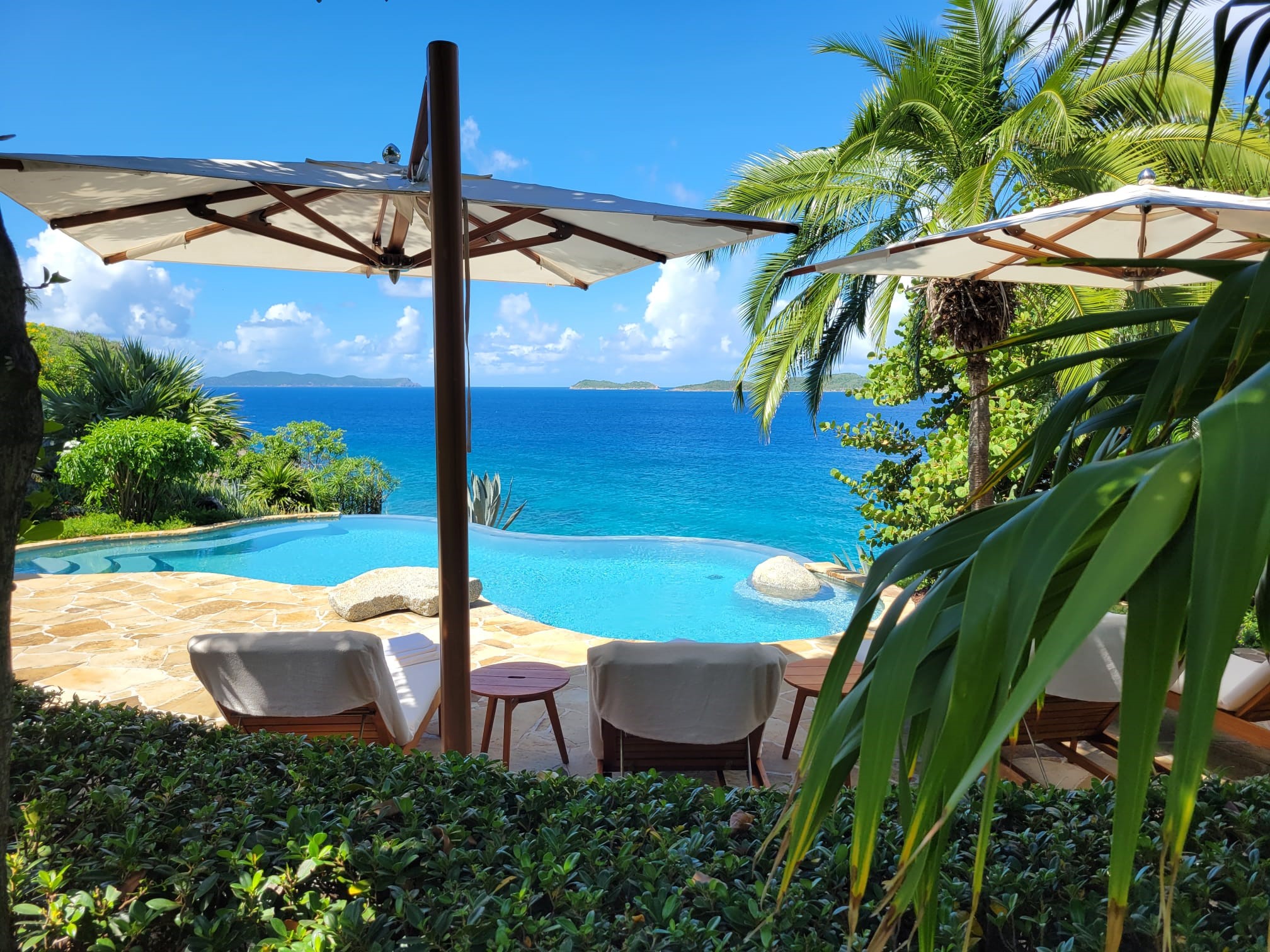Planning a yacht charter to the British Virgin Islands? Discover what to expect year-round with our climate guide to BVI weather by month, including tips for the best time to visit!
Overview of BVI Weather
The British Virgin Islands (BVI) boast a tropical climate that delivers warm, sunny weather year-round, making it a paradise for travelers. Average daytime temperatures range between 77°F (25°C) in the cooler months to 88°F (31°C) during the hottest months. Evenings bring pleasant breezes, perfect for relaxing on deck or exploring the islands’ vibrant nightlife.
The BVI enjoys two primary seasons: a dry season, known as the “winter months” or high season (December to April), and a wetter, more humid rainy season (May to November). While the wetter season coincides with the Atlantic hurricane season, it’s also a time when the islands are less crowded, and travelers can enjoy reduced rates. The region’s warm waters remain consistently inviting, with comfortable sea temperatures ranging from 78°F (25°C) to 84°F (29°C), ideal for swimming, snorkeling, and diving.
Monthly Breakdown of BVI Weather
No matter the time of year, the BVI’s appealing climate conditions provide an exceptional backdrop for your yacht charter. Understanding the weather patterns by month will help you plan the perfect itinerary for your Caribbean adventure.
January
The British Virgin Islands January weather offers cool breezes and pleasant weather, with average temperatures ranging from 77°F to 82°F (25°C to 28°C). An abundance of sunshine makes it one of the best months for sailing and exploring the islands. With calm seas and minimal rainfall, January is ideal for beach activities, water sports, and visiting popular tourist destinations.
February-March
February and March are in the dry season, with average temperatures hovering around 79°F to 84°F (26°C to 29°C). These months are among the driest of the year, offering warm temperatures and beautiful weather, ensuring ideal conditions for snorkeling, diving, and relaxing on the beach. The steady trade winds make it an excellent time for your sailing adventure.
April-May
April and May see slightly warmer temperatures, with average temperatures from 80°F to 86°F (27°C to 30°C). These months mark the transition into the wetter season with an increase in rainfall, but showers are usually brief and refreshing. The weather is ideal for beach lovers and those seeking a quieter, less crowded experience in the BVI.
June-November
June through November are the wettest months and coincide with the Atlantic hurricane season. Temperatures range from 82°F to 88°F (28°C to 31°C), and humidity levels increase. While there is a higher chance of rainfall, tropical storms are not constant, and many days remain sunny. Traveling during this off-season offers significant advantages, including lower charter rates and fewer crowds. However, it’s essential to monitor weather forecasts closely and plan ahead.
December
The weather in the Virgin Islands in December is typically dry and sunny, with temperatures ranging from 78°F to 83°F (26°C to 28°C), perfect for holiday travel and family trips. The weather sees a decrease in rainfall and is typically dry and clear with lots of sunshine, making it a popular month for travelers. The holiday season brings a lively atmosphere, with events and celebrations throughout the islands, making it a perfect time to enjoy a yacht charter.
Best Time to Visit the Virgin Islands
The British Virgin Islands are a year-round destination, but the best time to visit the Virgin Islands largely depends on your travel preferences. Here’s a breakdown of the seasons to help you choose the ideal time for your trip:
Peak Season
The months between December and April are considered the peak season for BVI crewed yacht charters. This period offers the driest and most pleasant weather, with temperatures averaging between 77°F and 84°F (25°C to 29°C). Calm seas, steady trade winds, and sunny skies make it the perfect time for sailing, snorkeling, and beach activities. However, this is also the busiest time of year, with higher prices for BVI charters and accommodations. If you plan to travel during these months, booking well in advance is essential.
Shoulder Season
The shoulder season in the British Virgin Islands typically falls between late April and early June, as well as November. This period bridges the gap between the high season (December to April) and the off-season (July to October). During the shoulder season, travelers can enjoy many of the benefits of the peak season—such as pleasant weather and fewer chances of rain—without the high prices or large crowds. It’s an excellent time for activities like BVI crewed yacht charters, snorkeling, and exploring the islands with a more relaxed vibe and lower rates.
Off-Season
The off-season, spanning from May to November, brings warmer temperatures and a chance of rain, with highs reaching 88°F (31°C). This period includes the BVI hurricane season, typically peaking between August and October. While there’s a higher chance of storms, many days remain sunny, and travelers can take advantage of reduced rates for all-inclusive yacht charters BVI. This quieter season is ideal for those looking to avoid crowds and enjoy a more relaxed atmosphere. The islands are lush and vibrant during this time, making it perfect for nature lovers.
Frequently Asked Questions
What is the typical BVI weather forecast?
The typical BVI weather forecast features warm, tropical conditions with daytime temperatures ranging from 77°F to 88°F (25°C to 31°C) year-round. The islands enjoy steady trade winds, making the climate comfortable even during warmer months. Rainfall varies by season, with the dry season (December to April) offering sunny skies and minimal rain, while the wetter season (May to November) sees occasional showers, often brief and refreshing.
How is the weather in Tortola BVI?
Tortola weather is warm year-round, with daily temperatures ranging from 77°F to 88°F (25°C to 31°C), with cooling breezes during evenings.
How does the weather in the British Virgin Islands change by month?
The BVI weather by month varies slightly, with a dry season from December to April and a rainy season from May to November.
When is hurricane season in the British Virgin Islands?
The BVI hurricane season runs from June to November, peaking in August to mid-October. Travelers should monitor hourly weather reports when they vacation during this time. It is important to note that there are virtually no yacht charter options available from August to mid October due to insurance regulations in the region.
What is the time in the British Virgin Islands?
The time in the British Virgin Islands follows Atlantic Standard Time (AST) from November to March and Eastern Standard Zone (EST) from March to November. The BVI does not observe daylight saving time.
What are the daylight hours like in the BVI?
The BVI enjoys approximately 11 to 13 hours of daylight year-round, with longer days during the summer months.



